Tom's Hardware Verdict
Crucial’s 500GB P1 packs three times the sequential performance of your average SATA based SSD, and brings decent 4K random performance, but is still a bit slower than competitors in application tests, even with its large SLC write cache. Even after steep price cuts, we recommend looking into other options unless the price drops even more
Pros
- +
Large SLC write cache
- +
Software package
- +
Power efficient
- +
Black PCB
Cons
- -
Poor direct to TLC write speed
- -
Lower than average application performance
- -
Write endurance rated to just 100TBW
Why you can trust Tom's Hardware
QLC Flash Gone Mild
7/15/19 Update: We've updated this article with new testing for the 500GB Crucial P1, as well as tweaked parts of the review to reflect current pricing.
Crucial's P1 is the company's very first NVMe SSD, but it is almost identical to the Intel SSD 660p we recently reviewed that came out around the same time. Just like the 660p, the P1 features Micron’s latest 64-layer 3D QLC flash and a Silicon Motion NVMe SSD controller.
The P1 breaks the SATA 6Gb/s barrier with its NVMe interface and delivers sequential throughput of up to 2/1.7 GB/s read/write, but we found that its real-world application performance is similar to the company's SATA MX500 SSD. Coupled with higher-than-anticipated launch pricing, the P1 was a tough sell in the ultra-competitive SSD market when it was brand-new. Its street price has slid down rather dramatically in the last several months, but so has that of its silicon sibling, the Intel 660p, as well as other competing drives. So despite lower prices the P1 is still tough to recommend, unless you see it on a sweet sale that brings the price down even further.
Crucial is the well-established consumer-facing brand of Micron, which is one of the few manufacturers of NAND flash. Being part of a NAND manufacturer ultimately means cheaper flash costs, and over the years Micron has passed that advantage to its customers by delivering competitive pricing and value. The company's most recent SSD, the MX500, is the epitome of its ability to deliver value and reliability. It delivers enough performance to satisfy most, comes with multiple accessories, a robust feature set, and usually costs less than most of its mainstream competitors.
That’s why anticipation has been building for the last year for Crucial's first NVMe SSD. With the company's track record, we surely thought it was going to be worth the wait. Well, today’s the day. We finally have the all new Crucial P1 in our hands, let's see how it fares in our testing.
Specifications
| Product | P1 500GB | P1 1000GB | P1 2000GB |
| Launch Pricing | $109.99 | $229.99 | N/A |
| Street Price 7/11/19 | $59.99 | $99.99 | N/A |
| Capacity (User / Raw) | 500GB / 512GB | 1000GB / 1024GB | 2000GB / 2048GB |
| Form Factor | M.2 2280 S3 (Single-Sided) | M.2 2280 S3 (Single-Sided) | M.2 2280 D2 (Double-Sided) |
| Interface / Protocol | PCIe 3.0 x4 / NVMe 1.3 | PCIe 3.0 x4 / NVMe 1.3 | PCIe 3.0 x4 / NVMe 1.3 |
| Controller | Silicon Motion SM2263EN | Silicon Motion SM2263EN | Silicon Motion SM2263EN |
| DRAM | DDR3 - 512MB | DDR3 - 1GB | DDR3 - 2GB |
| NAND Flash | Micron 64L 3D QLC | Micron 64L 3D QLC | Micron 64L 3D QLC |
| Sequential Read | 1,900 MB/s | 2,000 MB/s | 2,000 MB/s |
| Sequential Write | 950 MB/s | 1,700 MB/s | 1,750 MB/s |
| Random Read QD1 | 90,000 IOPS | 170,000 IOPS | 250,000 IOPS |
| Random Write QD1 | 220,000 IOPS | 240,000 IOPS | 250,000 IOPS |
| Encryption | N/A | N/A | N/A |
| Endurance | 100 TBW | 200 TBW | 400 TBW |
| Part Number | CT500P1SSD8 | CT1000P1SSD8 | CT2000P1SSD8 |
| Warranty | 5-Years | 5-Years | 5-Years |
Crucial’s P1 series delivers up to 2/1.75GB/s of sequential read/write throughput and up to 250,000/250,000 random read/write IOPS. As listed above, performance varies based upon the capacity of the drive.
To achieve these speeds, the P1 uses Crucial's Hybrid-Dynamic Write Acceleration technology. The P1's firmware is exclusive to Micron, but the feature set is suspiciously similar to Intel's SSD 660p, which also just happens to come with the same components.
Get Tom's Hardware's best news and in-depth reviews, straight to your inbox.
Like most modern SSDs, the P1 has an SLC buffer that absorbs incoming data to boost performance. Crucial's implementation takes a two-step approach to buffering. The drive has a fixed SLC buffer capacity of 5GB on the 500GB drive and 12GB on the 1TB model. In addition to the fixed buffer, the drive has a dynamic buffer that expands or contracts based upon the amount of data stored on the drive. This buffer can be located anywhere in the NAND array and consumes up to 14% of the usable capacity. That means the 500GB model should have a maximum buffer capacity of roughly 75GB and the 1TB model expands to 150GB.
The 500GB and 1000GB (1TB) drives are available at launch, but the 2TB model will come to market in November. Crucial's MSRP of $109.99 for the 500GB model and $219.99 for the 1TB model are higher than the Intel SSD 660p and most SATA SSDs but undercuts most other NVMe SSDs.
| Product | TBW | DWPD | Warranty (Years) |
| Crucial P1 1TB | 200 | 0.11 | 5 |
| Intel SSD 660p 1TB | 200 | 0.11 | 5 |
| Corsair Force MP510 960GB | 1700 | 0.93 | 5 |
| Samsung 970 PRO 1TB | 1200 | 0.66 | 5 |
| Adata XPG GAMMIX S11/SX8200 960GB | 640 | 0.35 | 5 |
| Samsung 860/970 EVO 1TB | 600 | 0.33 | 5 |
| WD Black 1TB | 600 | 0.33 | 5 |
| WD Blue 3D 1TB | 400 | 0.37 | 3 |
| Crucial MX500 1TB | 360 | 0.2 | 5 |
The P1 comes with a lengthy five-year warranty, but as we expect from a QLC SSD, endurance comes up short. The P1 can absorb 100TB of data writes per 500GB of SSD capacity, which equates to 200TBW of endurance for the 1TB model. That's the same endurance rating as Intel's QLC-powered 660p. However, the competition has stepped up its game. Many 1TB class NVMe SSDs have endurance ratings of up to 600TBW. Some SSDs, like Corsair's new MP510, offer more than eight times more endurance than the P1. Even Crucial’s own MX500 offers almost twice the endurance.
The P1 supports the NVMe low power states, so active power consumption is rated at just 100mW and stretches up to a maximum of 8W. It also has an impressive 80mW idle power consumption rating. The P1 also features power loss protection for data-at-rest and has a multi-step data integrity algorithm that protects against data loss. Crucial's Adaptive Thermal Protection protects the components from overheating, and the RAIN (Redundant Array of Independent NAND) feature provides device-level data redundancy as a further layer of protection.
Unlike many new SSDs, including the Crucial MX500 and Intel SSD 660p, the Crucial P1 doesn't support AES 256-bit hardware encryption.
Software and Accessories
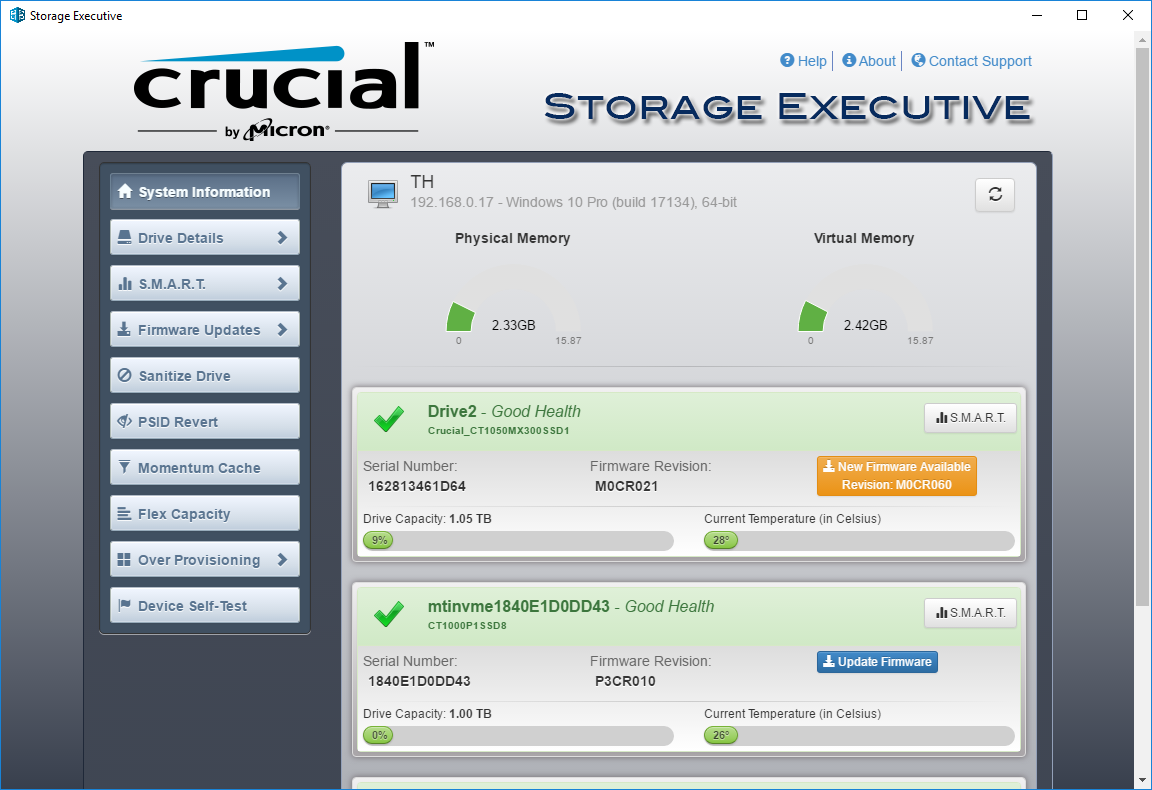


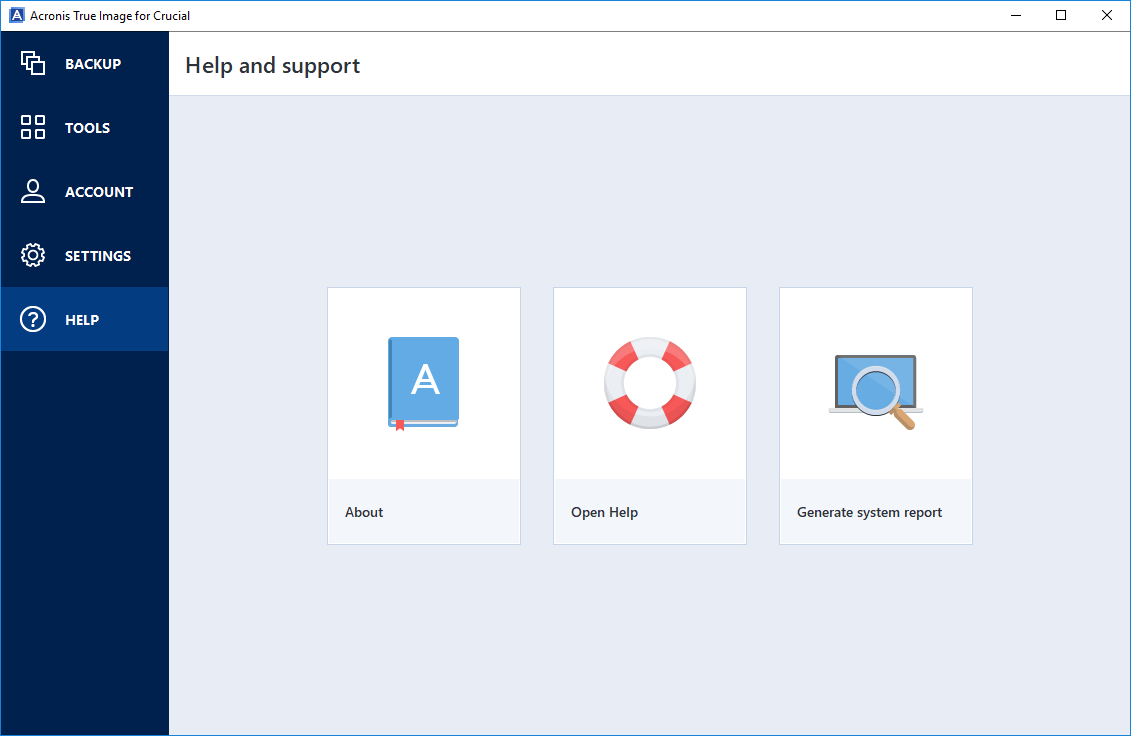
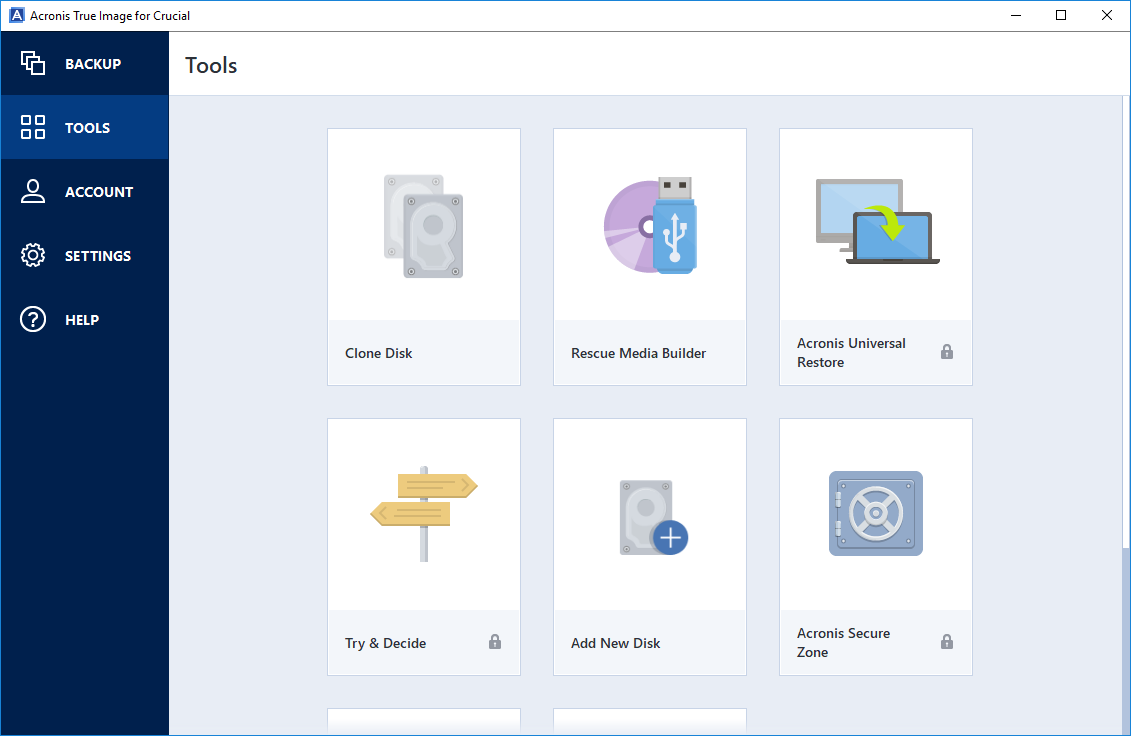
Crucial offers Acronis True Image HD software, which you can use to clone over your OS from your old drive or for backing up your data, and its Crucial Storage Executive software. The Storage Executive software provides SMART value monitoring, capacity monitoring, and performs firmware updates. The software also enables Crucial's Momentum Cache, which is a RAM caching program that absorbs incoming random write data and flushes it to the drive as sequential data. That improves both performance and endurance.
A Closer Look


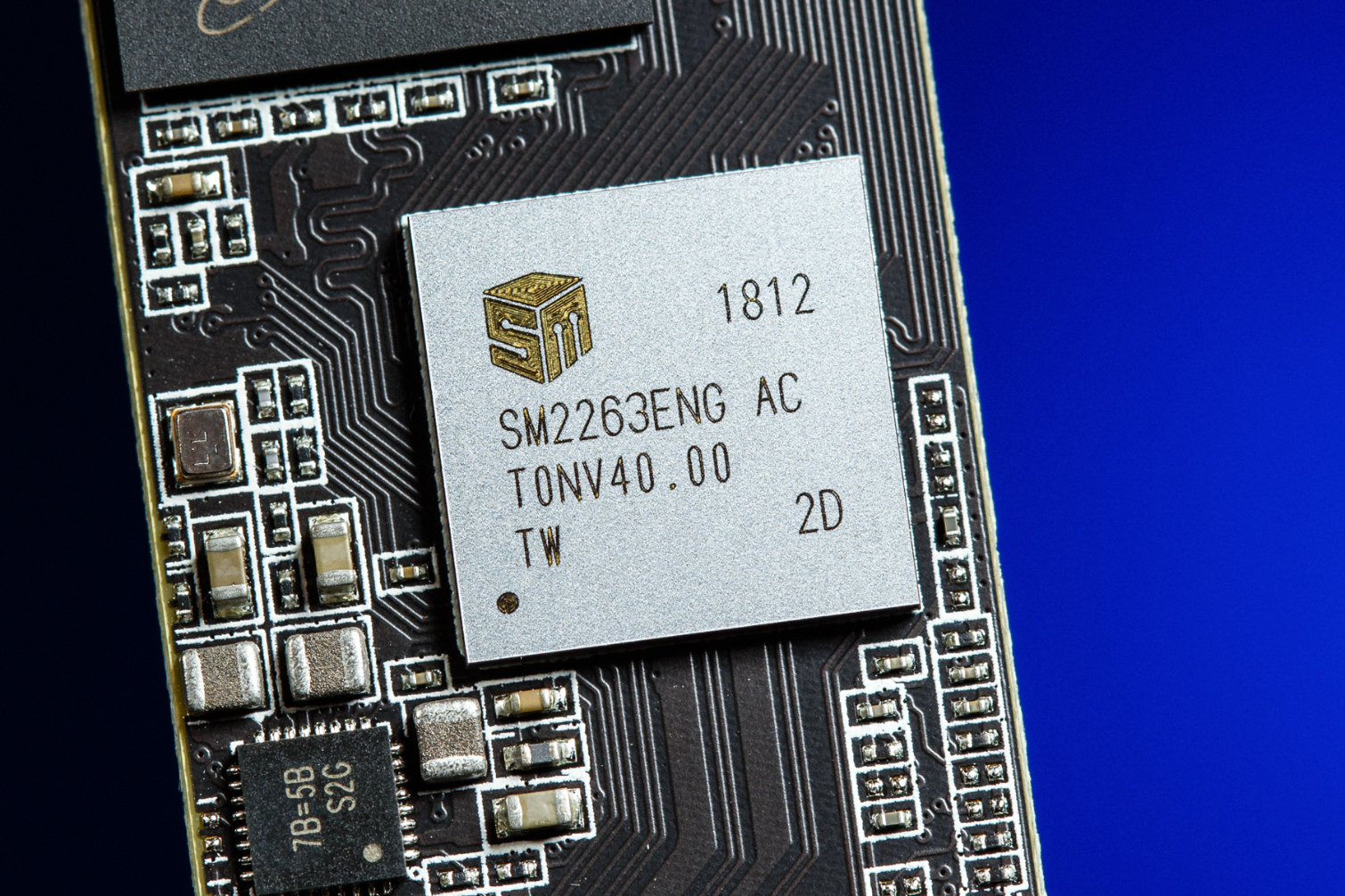
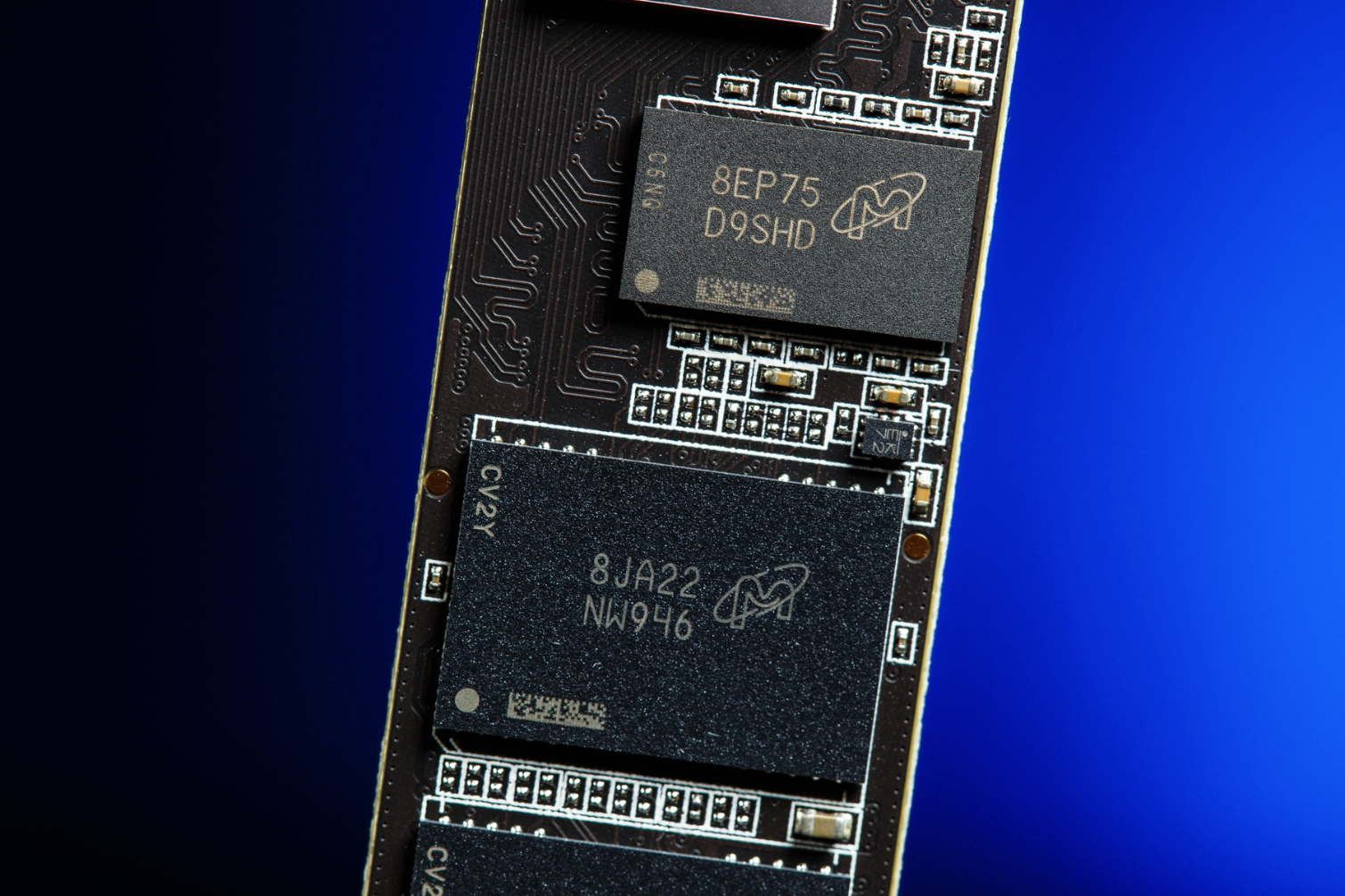

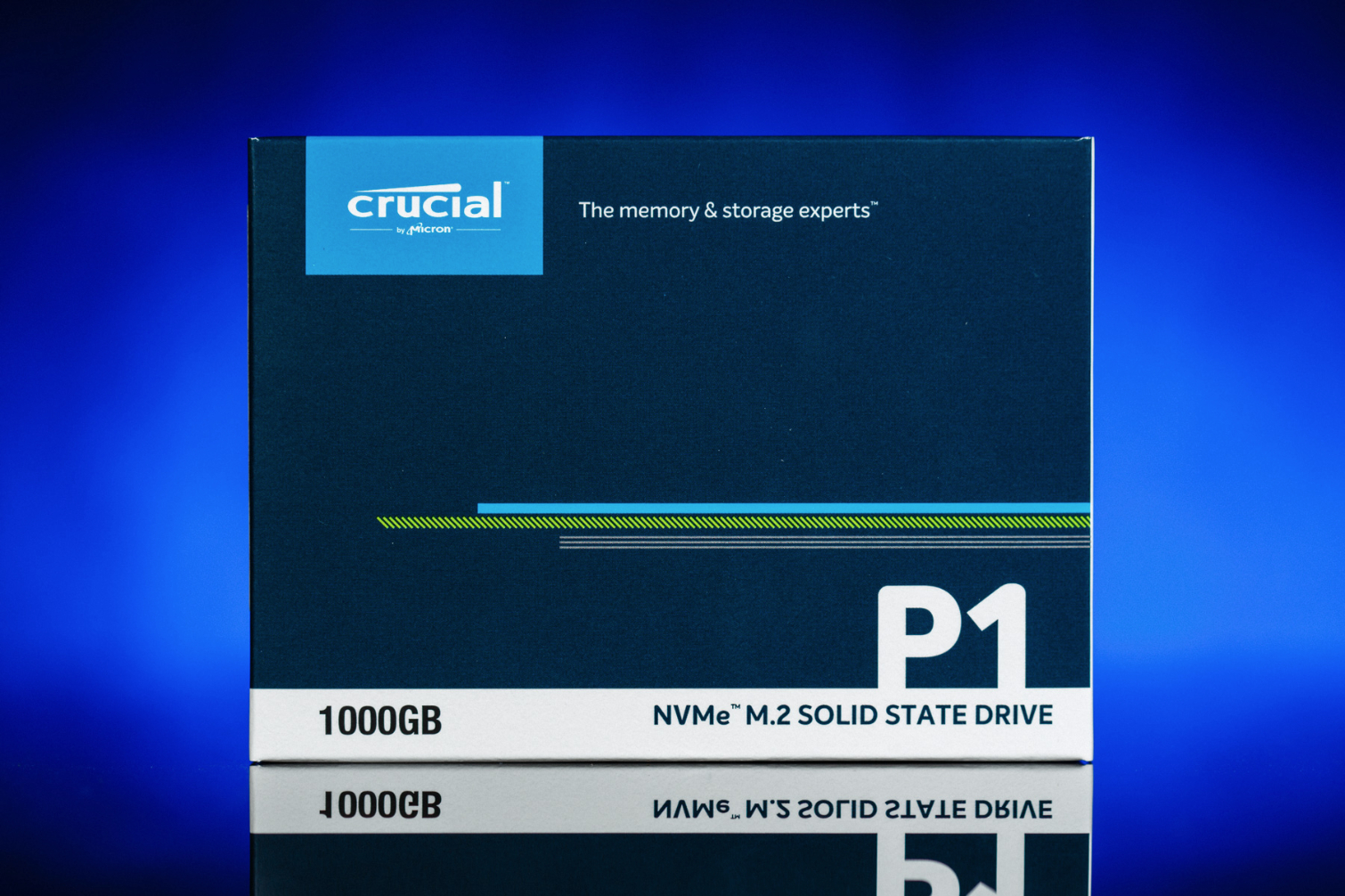
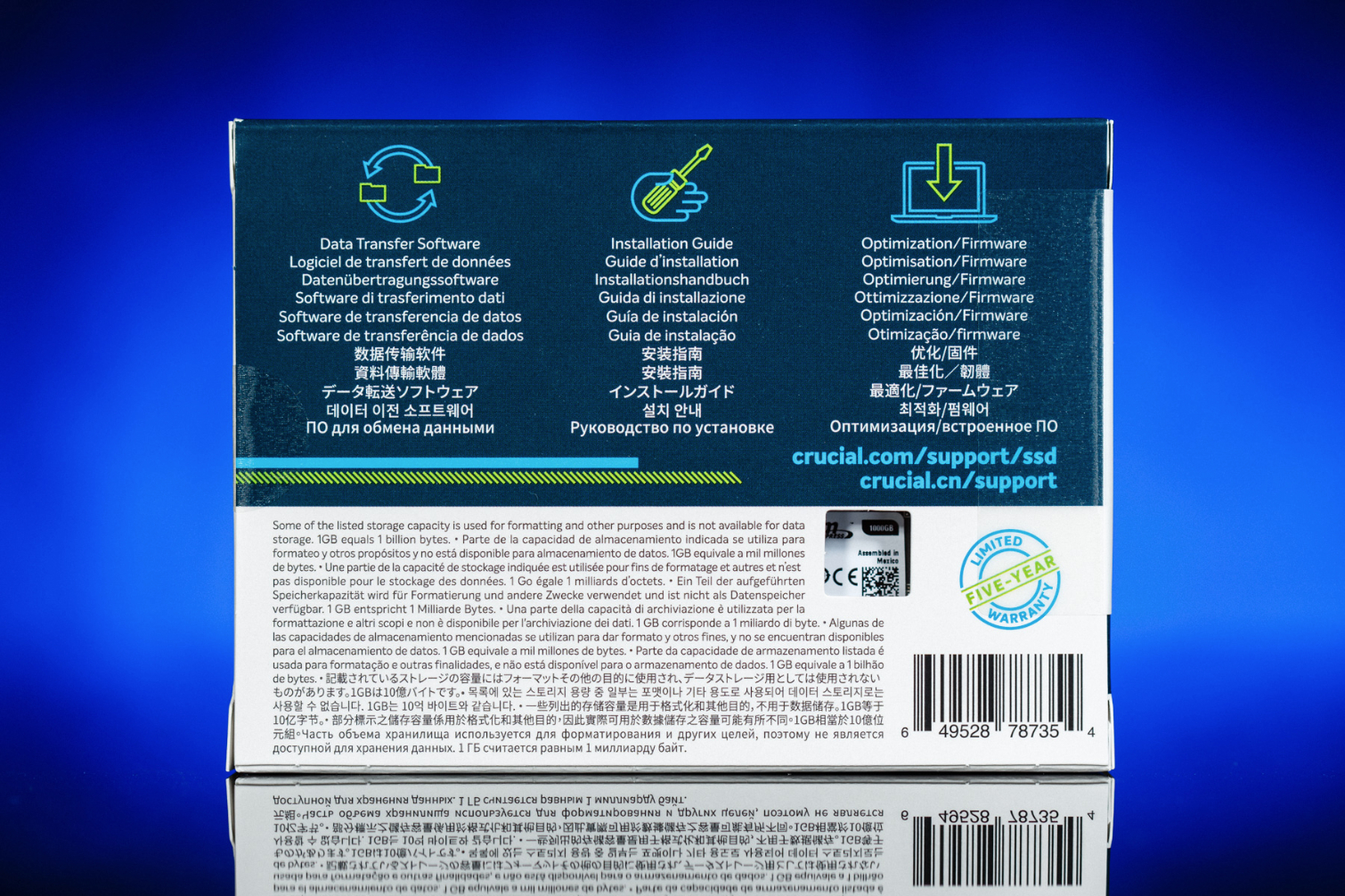
The Crucial P1 is an NVMe 1.3 compliant SSD that communicates over a PCIe 3.1 x4 connection. It comes in an M.2 2280 form factor and both the 500GB and 1TB models are single-sided, meaning all the components are on one side of the PCB. The 2TB model has components on both sides of the PCB (double-sided) and is a bit thicker. The SSD comes with a blacked-out PCB, which is a nice touch, but the white sticker on top doesn't match the color scheme, and you can't remove it without voiding your warranty.
The Crucial P1 comes equipped with the four-channel Silicon Motion SM2263EN controller that limits it to a maximum of 2GB/s of throughput. Silicon Motion's pricier eight-channel SM2262/2262EN controllers are faster, but you'll only find those on more expensive SSDs.
The 1TB model comes with two NAND packages filled with 128GiB dies and has 931GB of usable capacity after formatting in Windows. The drive also uses a DDR3 buffer to accelerate the Flash Translation Layer (FTL). All models have 1MB of DRAM per 1GB of NAND.
MORE: Best SSDs
MORE: How We Test HDDs And SSDs
MORE: All SSD Content

Sean is a Contributing Editor at Tom’s Hardware US, covering storage hardware.
